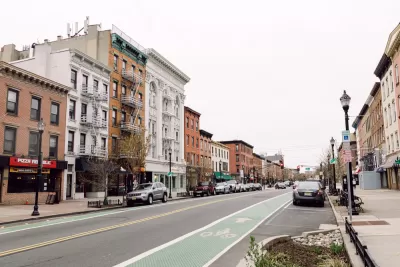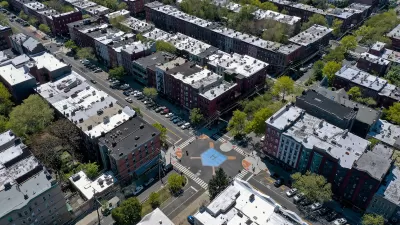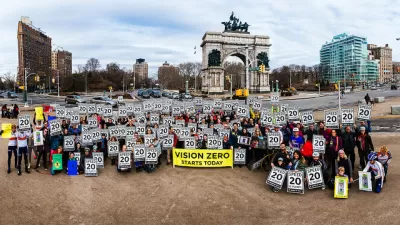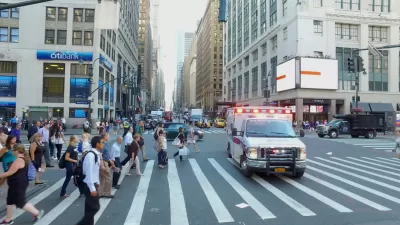Hoboken has spent the past several years investing in new bike infrastructure, and traffic collisions of all kinds have since decreased.

Eve Kessler reports:
Hoboken, a New Jersey city of about 54,000 souls directly across the Hudson from New York City, shows what can be accomplished when a municipality really focuses on the zero of Vision Zero — the “Mile Square City” has recorded no traffic fatalities for three straight years.
According to Kessler's sources at the city, Hoboken has prioritized bike lane infrastructure and committed to an identity as a pedestrian-oriented city to accomplish major progress in traffic safety. From 2019 to 2020, the city saw a 35 percent reduction in the number of pedestrians struck by automobiles drivers, an 11 percent reduction in the number of bicyclists struck by automobile drivers, and a 27 percent reduction in the number of vehicle collisions.
The proof of Hoboken's Vision Zero commitment is most visible on Washington Street, the city's "main drag," as Kessler describes it. "Before being redesigned last year, Washington Street had a high number of collisions and an outmoded design, with no bike facilities, no curb extensions and traffic signaling that favored the fast movement of automobiles." The redesign of the street included curb extensions, bike lanes, recalibrated traffic signals, and wider crosswalks with "retro-reflective, thermo-plastic stripes."
For more evidence that the ambitious goals of Vision Zero are possible, see also a recent Planetizen feature by Angie Schmitt.
FULL STORY: EYES ON THE STREET: How Hoboken Has Eliminated Traffic Deaths

Study: Maui’s Plan to Convert Vacation Rentals to Long-Term Housing Could Cause Nearly $1 Billion Economic Loss
The plan would reduce visitor accommodation by 25,% resulting in 1,900 jobs lost.

North Texas Transit Leaders Tout Benefits of TOD for Growing Region
At a summit focused on transit-oriented development, policymakers discussed how North Texas’ expanded light rail system can serve as a tool for economic growth.

Using Old Oil and Gas Wells for Green Energy Storage
Penn State researchers have found that repurposing abandoned oil and gas wells for geothermal-assisted compressed-air energy storage can boost efficiency, reduce environmental risks, and support clean energy and job transitions.

Santa Barbara Could Build Housing on County Land
County supervisors moved forward a proposal to build workforce housing on two county-owned parcels.

San Mateo Formally Opposes Freeway Project
The city council will send a letter to Caltrans urging the agency to reconsider a plan to expand the 101 through the city of San Mateo.

A Bronx Community Fights to Have its Voice Heard
After organizing and giving input for decades, the community around the Kingsbridge Armory might actually see it redeveloped — and they want to continue to have a say in how it goes.
Urban Design for Planners 1: Software Tools
This six-course series explores essential urban design concepts using open source software and equips planners with the tools they need to participate fully in the urban design process.
Planning for Universal Design
Learn the tools for implementing Universal Design in planning regulations.
Ascent Environmental
Borough of Carlisle
Institute for Housing and Urban Development Studies (IHS)
City of Grandview
Harvard GSD Executive Education
Toledo-Lucas County Plan Commissions
Salt Lake City
NYU Wagner Graduate School of Public Service





























